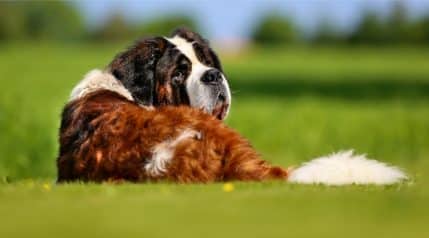The friendly, cheerful Cocker Spaniel, with his huge, dewy eyes and cheeky personality, is one of the U.S.’ most popular dog breeds. Cockers were initially used as hunting dogs, but have since gained a considerable following as much-loved family pets.on
Cocker Spaniels are medium-sized dogs that stand about 15 inches tall, so they fit comfortably into any size home. Cockers can be easily trained and make loving, enthusiastic playmates for children. Sporty and bred to work, the Cocker Spaniel loves nothing more than spending a day out on the trail with his owners.
In this informative article, we tell you everything you need to know about the Cocker Spaniel breed. You’ll learn about the Cocker Spaniel’s origins, what to expect from the breed as a pet, and the possible health issues to which the breed is susceptible. So, let’s find out all about the lovable Cocker Spaniel!
History

The origins of the Cocker Spaniel are thought to go right back to the “Spanyells” of the 14th century. Over the following years, the Spaniel breed diversified and evolved into many different forms that all had different jobs. Some Spaniels were used for flushing game and retrieving shot birds on command. In fact, the name “Cocker” derives from the dog’s skill in hunting woodcock.
Initially, Spaniels were grouped and classified by their size. So, different types of Spaniels could be born in one litter. Eventually, the various Spaniel types became individually recognized breeds.
By 1946, the Cocker Spaniel was recognized as a separate breed. Thanks to the 1955 Disney movie, Lady and the Tramp, the popularity of the breed saw a massive boost.
Until 1990, the Cocker Spaniel was the breed of choice for families in the U.S., according to American Kennel Club records. These days, the Cocker Spaniel is ranked down at #25, but his jolly personality, versatile size, and intelligence still make him a popular choice for people looking for a family pet.
Like the Golden Retriever or the Labrador Retriever, the modern Cocker Spaniel is the smallest member of the Sporting Group.
As well as being a terrific family pet, the Cocker Spaniel still enjoys a working role in field sports. Also, you’ll see Cocker Spaniels competing in dog agility events.
Temperament

Cocker Spaniels are known for their cheerful, prudent temperament. They are loving, gentle, playful, and trustworthy companions. One reason Cocker Spaniels are so popular is that they make excellent family pets, getting along well with children and other animals.
They tend to be apprehensive, even with proper early socialization. This sensitive personality means harsh training methods should not be used. To avoid your Cocker Spaniel from being fearful, use consistent and gentle training methods to get the results you’re looking for.
Barking is a way dogs communicate, and Cocker Spaniels love to attempt to get messages across to humans. Teaching them the “quiet” command can be helpful to deter this behavior.
Bred as a hunting dog, the prey drive in Cocker Spaniels can be strong. It is best to keep him on a leash whenever you are out and about. This hunting instinct also means they are eager to please their masters.
Size & Appearance

Cocker Spaniels are classified as medium-sized dogs, standing between 14 and 15 inches at the shoulder and weighing in at around 30 pounds. Male Cocker Spaniels are generally slightly larger than females.
Their heads are graceful and domed with a broad, square muzzle. Their backs slope toward the tail, giving the pup an appearance fit for royalty. One of their most distinctive features is their feathered and long ears that flop on either side of their heads. People can’t resist petting these lush ears!
The term “puppy dog eyes” was likely inspired by the Cocker Spaniel because of their big, dreamy, begging brown eyes. This puppy glimmer stays with them whether they are four months old or fourteen years old.
Coat & Colors

Cocker Spaniels have medium to long silky coats that can be straight or slightly wavy. Cockers’ legs, chest, and belly are adorned with long, luxuriant feathering.
Cockers come in a wide range of beautiful colors, including:
- Golden
- Red
- Chocolate
- Black
- Black and tan
- Liver and tan
- Orange and white
- Liver and white
- Lemon and white
- Black and white
- Black, white, and tan
- Liver, white, and tan
You can also find roan colors, including blue, orange, liver, lemon, blue roan and tan, and liver roan and tan. It’s not uncommon for Cocker Spaniels to have coats that are spotted.
Exercise

Cocker Spaniels were bred to be working dogs. Consequently, they are lively and energetic, needing plenty of exercise to keep them happy. You’ll need to take your Cocker Spaniel out for two walks each day and give him lots of playtimes too.
That said, most Cockers are more than happy to spend a rainy afternoon just chilling out on your lap in front of the fire.
Living Conditions

Although in theory, you could house a working Cocker Spaniel outside overnight, there are several reasons why this might not be such a good idea.
- Howling and barking: Cockers that are used to living indoors with their human family tend to develop separation anxiety that leads to howling and barking if they’re put outside overnight.
- Digging: Cockers will dig if they become anxious while confined away from their owners. If you have a “run” that is partially on grass, you can bet that your Cocker Spaniel will dig a hole in it.
- Chewing: Cockers will chew and destroy their overnight accommodation if they become anxious when suddenly finding themselves alone. When very stressed, Cocker Spaniels have been known to chew their own paws until they’re raw.
Finally, isolating your home-loving Cocker Spaniel can lead to your dog developing a lack of trust in your family. Your pet may even become slightly aggressive towards you and be less obedient and harder to train.
Training

Cocker Spaniels are generally good to train. However, the breed is quite sensitive, and you’ll accomplish more if you use positive training techniques. You’ll get much further with lots of praise, treats, and a clicker than you will with a choke chain and a disciplinarian attitude.
Note that the breed is well-known for urinating when they are made to feel intimidated or submissive. So, if you’re too heavy-handed or harsh, you could finish up with a frightened, upset puppy and a wet carpet!
Some Cocker Spaniels can have a stubborn streak, which may make them challenging to train. Aim for a balance between providing kind, gentle guidance, and being firm, persistent, and consistent in the directions that you give.
One potential issue when training Cockers is that these dogs do have a very strong sense of smell. That means a Cocker can be inclined to head off on the trail of a tempting scent, ignoring your requests to come back. For that reason, you must train a strong recall command and ideally keep your Cocker Spaniel on a leash when out on walks, only allowing him to run off-piste in a fenced, off-leash dog park area.
Health

Just like all pedigree breeds, Cocker Spaniels can be susceptible to a few genetic health problems, including:
- Eye disorders: cataracts, glaucoma
- Hip dysplasia
- Patella luxation
- Disc disease
- Liver problems
- Epilepsy
- Heart disease
Eye Disorders
Cocker Spaniels are especially prone to developing eye disorders, ranging from “cherry eye” that can be corrected through surgery to conditions such as cataracts and glaucoma that can be sight-threatening.
Many Cocker Spaniels lose their vision entirely in their senior years, and it’s not uncommon for younger dogs to begin suffering sight loss at just a few years of age, due to progressive renal atrophy.
Cocker Spaniels are also vulnerable to a condition called keratoconjunctivitis sicca, or dry eye, where the dog’s eyes don’t produce enough tears, which can lead to corneal problems.
Hypothyroidism
Hypothyroidism is a condition that causes underproduction of thyroid hormone. That causes lethargy, weight gain, skin infections, shivering, and hair loss.
Ear and Hearing Problems
Some white, blue-eyed Cocker Spaniels are affected by congenital deafness. These problems are caused by the merle gene and are incurable. So, it’s best not to buy a puppy with these characteristics.
Long Spaniel ears tend to trap dirt and moist air inside the ear canals. That creates the ideal environment for the proliferation of yeast and bacteria, leading to chronic ear infections. To prevent problems, be sure to clean your Cocker Spaniel’s ears regularly.
Poor ear health and recurrent infections can lead to permanent damage, so keep a weather eye on your Cocker’s ears, and consult a vet right away if you spot a problem.
Autoimmune Diseases
Cocker Spaniels can be prone to autoimmune diseases, including autoimmune hemolytic anemia (AIHA). In dog’s that are affected by AIHA, the immune system attacks the animal’s red blood cells, causing acute anemia. Although the condition can be treated, the mortality rate among Cocker Spaniels affected by the illness is high.
Good breeders screen all their breeding stock for genetic disease and will only breed from the strongest, healthiest specimens. However, sometimes, even a well-bred puppy can develop one of those diseases. So, if you’re buying a puppy, always ask the breeder about the ages of the puppy’s relatives and find out what they died of.
The average lifespan for a Cocker Spaniel is between 12 and 15 years. We recommend that you consider pet insurance to help offset expensive medical costs.
Nutrition

When choosing food for a Cocker Spaniel puppy, look for a brand that supports healthy growth and development of teeth and bones, as well as providing something for a glossy coat, healthy skin, and plenty of energy.
A growing puppy should receive around 150g to 250g of specialized puppy food per day for the first six months of his life. Over the next five months, reduce the ration to around 130g to 190g per day.
When feeding an adult Cocker Spaniel, you’ll need to adjust the ration, depending on the weight of your pet. Follow the guidelines for feeding your dog that you’ll find on the product packaging. If you’re not sure how much to feed him or what kind of food to buy, have a chat with your vet for guidance.
Grooming

Show ring Cocker Spaniels have floor-length, silky coats that take a lot of work to keep them tangle-free and gloriously glossy. So, most people who have a Cocker as a family pet like to take their dog to a groomer for a short cut all over, known as a puppy cut.
However, even dogs with puppy cuts must be brushed, bathed, and trimmed every couple of weeks. A Cocker Spaniel with a long flowing coat will need bathing, trimming, and brushing at least once a week. Cockers do shed moderately but no more so than other breeds.
Breeders & Puppy Costs

Always choose a reputable breeder who will match you with the perfect puppy. Good breeders will have had all the necessary health screening carried out on the puppy’s parents to ensure that the puppy doesn’t inherit any genetic health conditions.
A good breeder will be more interested in finding the right homes for their puppies than in making a fortune selling them. That said, it’s not advisable to buy a cheap puppy. The old maxim, “you get what you pay for” certainly rings true when it comes to buying pedigree dogs. You can budget anywhere from $1,000 to $2,000 for a purebred Cocker Spaniel puppy. Find the perfect name for your new Cocker Spaniel puppy.
Look for a breeder who is a member of The American Spaniel Club, Inc., and who abides by its Code of Ethics. The Code of Ethics forbids the sale of puppies through pet shops. Also, the breeder should be keen to help you train and raise your puppy.
Puppy mills have deservedly received much bad press recently. A puppy mill is basically a commercial enterprise that exists to produce as many puppies as it can for as little cost as possible.
Often, the breeder has not bothered to have the puppies’ parents health screened, and usually, their dogs are kept in deplorable, unsanitary conditions. Puppies from puppy mills are often sickly, and many succumb to various diseases within a few weeks of arriving in their new home. Many pet stores obtain their puppies from puppy mills.
Rescues & Shelters

If you’re happy to offer a forever home to an adult dog, you could check out Cocker Spaniel shelters and rescue organizations in your region. Check out this link and search online for an adult Cocker Spaniel.
Just be aware that an adult rescue Cocker Spaniel may come with behavioral problems, depending on the dog’s history. Always find out as much information as you can about the dog before agreeing to re-home him.
Some rescue centers operate a kind of “try before you buy” arrangement where potential owners can take the dog home on a trial basis to ensure that you’re compatible before you make a final commitment.
For all purebred dogs, it seems it’s common these days to mix them with other purebreds, and the Cocker Spaniel isn’t any different. There are many popular mixes with the Cocker Spaniel, with theGolden Cocker Retriever being a popular option.
As Family Pets
- Cocker Spaniels are medium-sized dogs, making them ideal for a small home or apartment.
- The Cocker Spaniel is a friendly, loving dog that makes an ideal companion.
- Cockers are energetic and full of fun, making them ideal for a family who enjoys the outdoor lifestyle.
- Most Cockers are very trainable, although you do need to be gentle, firm, and persistent as these are sensitive souls who can be easily upset. The breed also has a stubborn streak that can make training a challenge.
- A well-socialized Cocker Spaniel will be great around kids and will play for hours.
- Cocker Spaniels do require quite a lot of grooming to keep their coats looking good. That said, the breed doesn’t shed much.
- The sensitive Cocker Spaniel can suffer from separation anxiety, which could be a problem if you’re out at work all day.
All in all, the Cocker Spaniel makes an excellent pet for a lively household where plenty is going on, and ideally where he’ll have company during the daytime. And after all that fun and exercise, your Cocker will be happy to snuggle up with you and go to sleep on your lap.
American vs English Cocker Spaniels
English Cockers are larger dogs than their American cousins. Leggier and built to hunt and retrieve, the English Cocker is a quick study and ideal sport dog. The English Cocker Spaniel was originally developed to hunt woodcock – large, short-legged wading birds that are primarily nocturnal and spend most of the day in dense cover. American breeders had a different focus than English Cocker breeders and bred smaller, solid-colored dogs blended with field spaniels. In contrast, the English Cocker breeders crossed in roan and particolored springer types. The English Cocker Spaniel was recognized as a breed distinct from the American Cocker Spaniel by the American Kennel Club (AKC) in 1946.
Final Thoughts
A Cocker Spaniel could make the perfect family pet for you if you’re looking for a medium-sized dog that’s good with kids and has a loving, friendly temperament. Although the Cocker does enjoy chilling out with his human family, he’s also got plenty of energy to burn, and you will need to make time to exercise your pet.
If you enjoy grooming your dog, the Cocker Spaniel’s long, silky coat will keep you busy! That said, the Cocker is only a moderate shedder, and regular trips to a professional groomer will keep him in good condition.






Requirement of 5 months COOCKER SPENIAL male pups